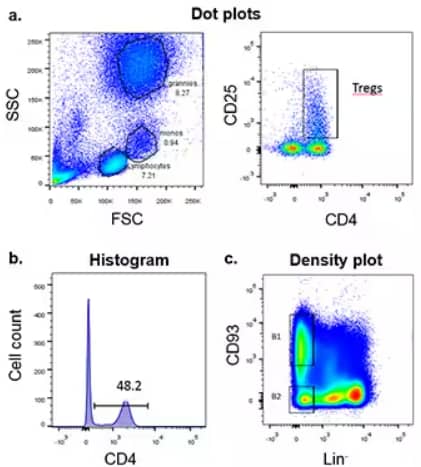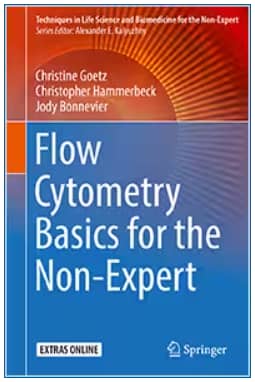By Jody Bonnevier, PhD
Flow Cytometry: A Challenging Interdisciplinary Application
Flow cytometry has long been the cell analysis method of choice for immunologists, however more and more disciplines have recognized its powerful and flexible capabilities, and want to harness the advantages of this multiparameter single-cell analytical tool. Nowadays, the benefits of flow cytometry for cell phenotyping extend from basic to clinical research and diagnostic applications as well as to drug discovery and development.
In basic research, the same flow cytometry techniques used to phenotype T cell subsets can be applied to defining protein expression on pluripotent versus differentiated stem cells, or on microglial cells. At the clinic, the use of flow cytometry for the identification of rare cell populations allows to monitor circulating tumor cells and provides a powerful diagnostic tool.
However, new users confront a steep learning curve, due to the complexity of the application requiring extensive troubleshooting of methods and proper validation. Moreover, the broad selection of reagents, antibodies and fluorochromes, present a confusing and challenging puzzle to newcomers.

Electronic conversion to flow cytometry data plots. (a, left panel) FSC/SSC plot of human whole blood. PBMCs were stained with CD4 and CD25 (a, right panel), CD4 (b), or a Lineage cocktail (Lin-) and CD93. (C) Cells were then acquired on a BD LSRFortessa™ and analyzed using FlowJo® software. The collected light emissions are displayed as dot plots, histograms, or density plots.
Flow Cytometry Basics for the Non-Expert
Novices to flow cytometry would benefit from a step-by-step introductory and comprehensive guide to ease their transition. With flow cytometry novices in mind, Bio-Techne scientists, experts in flow cytometry, have developed an introductory guide: "Flow Cytometry Basics for the Non-Expert", a concise handbook written for the new flow cytometry user, designed to get beginners past the mystique and onto competently running well developed and validated flow cytometry experiments.

Flow Cytometry Basics for the Non-Expert: This guide introduces new flow cytometry users to a broad range of topics, from basic staining protocols to detailed workflows, for setting up and executing multicolor flow cytometry experiments. Get New Flow Cytometry Book Now!
What do you get?
This book was written to guide newcomers to flow cytometry from a real user’s perspective, in a simple format, with a multitude of visual examples to demonstrate the concepts. Consisting of 10 chapters and over 100 figures, this book builds a solid foundation of knowledge with terminology and definitions, then walks through how a cytometer works to provide a better understanding of how cells are analyzed.
Antibody and fluorochrome options can be overwhelming, but tips on how to choose these reagents based on protein expression levels and fluorochrome brightness will facilitate staining panel building. To ease assay optimization, the effect of antibody volume, staining time, and temperature are included with visual examples. The book also contains detailed cell surface and intracellular staining protocols, and a helpful troubleshooting section, including many examples of what happens when something goes wrong, and how to troubleshoot experimental challenges.
Jody Bonnevier, PhD
R&D Systems/Bio-Techne
Manager of Flow Cytometry Antibody Development